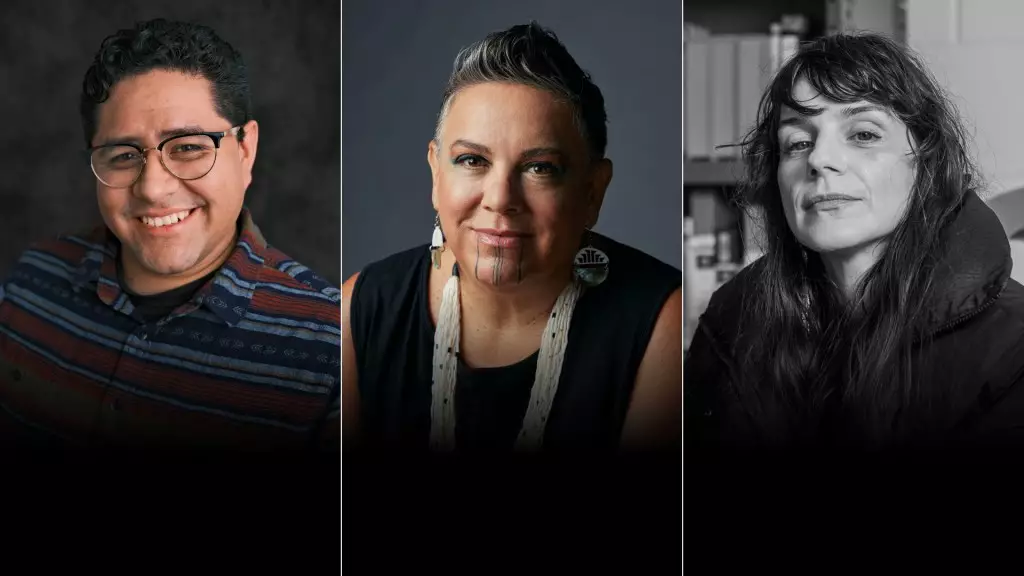The Sundance Film Festival has long been recognized as a premier platform for independent filmmakers to showcase their work, but in recent years, it has also become a powerful advocate for marginalized voices, especially those of Indigenous artists. This year’s announcement of the recipients for the Merata Mita Fellowship and the Graton Fellowship signifies a continued commitment by the Sundance Institute to support Indigenous creativity and storytelling.
The Merata Mita Fellowship, named after the influential Māori filmmaker, serves not just as a tribute to her legacy, but as a beacon for emerging Indigenous filmmakers who are woman-identified. Rhayne Vermette, a Métis filmmaker, has been announced as this year’s recipient. This fellowship aims to empower women in the industry by providing them financial support, mentorship, and invaluable networking opportunities. Vermette’s statement reflects both her gratitude and her understanding of the weight of this recognition. She has noted how Mita’s groundbreaking contributions have inspired her own journey, underscoring the importance of lineage and mentorship in the creative process. Such sentiments resonate deeply within many Indigenous communities where storytelling is not just a craft but an integral bond to identity, culture, and history.
Vermette’s recognition also highlights crucial conversations about representation in film. For years, mainstream cinema has frequently sidelined Indigenous narratives, often relegating them to stereotypes or misrepresentation. By amplifying Indigenous women through initiatives like the Merata Mita Fellowship, Sundance fosters an environment where authentic stories can flourish and challenge prevailing narratives.
Alongside Vermette, the Graton Fellowship for Artists from California-based Tribes has awarded Roni Jo Draper from the Yurok tribe and Stefan Perez from the Coast Miwok community. This fellowship, newly established in 2023, underscores the urgent need to support Indigenous voices specifically rooted in California’s diverse tribal landscape. Draper’s aspirations to portray Yurok fire practices narrative exemplifies how storytelling can serve as an avenue for cultural education and preservation. Her focus on how these practices reflect the community’s relationship to the land speaks volumes about the role of storytelling in bridging the gap between generations and maintaining cultural continuity.
Established through the generous endowment from the Federated Indians of Graton Rancheria, the Graton Fellowship not only offers financial backing but also mentorship and access to valuable resources, including participation in the Sundance Film Festival. Draper’s comments highlight the critical importance of community-centric storytelling. She emphasizes her intention to uplift her community through her film work, reflecting a broader trend among Indigenous creators to reclaim narratives and craft their stories authentically.
Stefan Perez’s excitement at receiving his fellowship underscores the significance of recognition by established institutions. His goal to depict the rich, complex history of California Indians speaks to a yearning for authenticity and respect in how Indigenous experiences are represented on screen. The passion and commitment shown by all three fellows are indicative of a new wave of Indigenous filmmakers who strive to reclaim narrative space and foster a deeper understanding of their cultures.
The importance of the Merata Mita and Graton Fellowships extends far beyond individual recognition; they symbolize a shift towards inclusivity and respect for Indigenous storytelling in the film industry. Such fellowships not only provide immediate resources but also help to build sustainable networks for future filmmakers, ensuring that Indigenous voices continue to be heard and valued.
As the world of cinema evolves, the filmmakers supported by these fellowships represent a proactive response to the demand for rich, diverse narratives that resonate with broader audiences. By investing in these artists, Sundance not only enhances cultural representation but also contributes to societal understanding and appreciation of Indigenous cultures.
Overall, the recognition of Vermette, Draper, and Perez is a moment of celebration not just for the recipients themselves, but for the communities they represent. As these artists embark on their journeys to bring their stories to life, their work could well serve as a catalyst for broader conversations about identity, culture, and representation in the arts. The future of Indigenous filmmaking appears promising, with these fellowships paving the way for creative exploration and storytelling that honors the rich traditions of the past while looking forward to new horizons.
